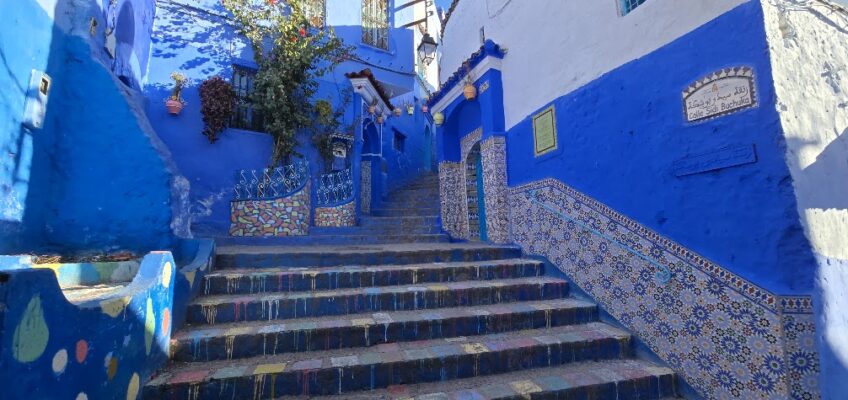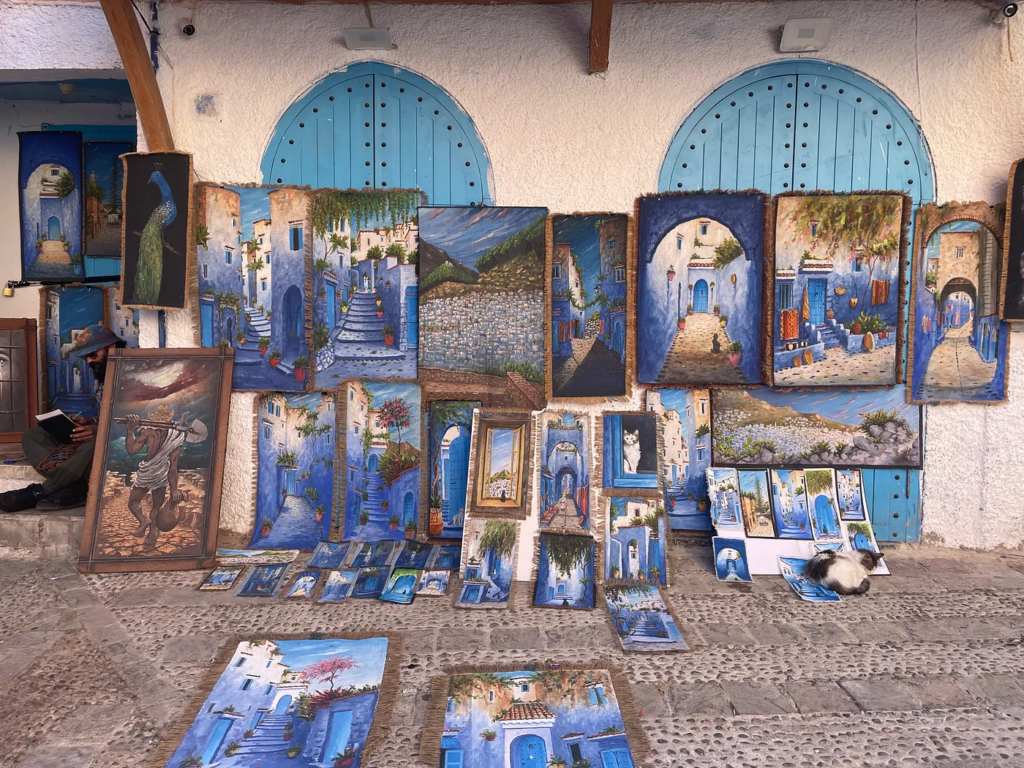After three nights in Chefchaouen, today we’ve moved on to Tangier, where we are staying for just one night before heading to Rabat tomorrow. I’ll write separately about Tangier and the trip here.
So far I can only describe the things I’ve seen as surprising. This part of Morocco is so colorful, so vibrant, and a complete delight. I imagined dense crowds and a lot of hustle and bustle. I thought medinas would be filled with aggressive vendors trying to goad travelers into spending money on unneeded trinkets. And I expected to be pestered by elderly beggars with missing limbs and filthy youngsters looking for a handout.
But the entire vibe has been relaxed, laid back, and friendly. There are a lot of people around, but for the most part it’s easy to get around without having to squeeze through throngs of tourists and locals. The only annoyance in Chefchaouen was the guys at the restaurants on the main square trying to entice me to come eat. But when I said no thank you, they said ok welcome to Chefchaouen.
As I said, it’s been a delight.
Scenery
Perhaps the biggest surprise has been how beautiful the scenery is. I already wrote about that on the drive up from Casablanca, and it has only gotten even better. Yesterday we drove about an hour and a half to Tetouan, a city on the Mediterranean. We drove inland on the way up and along the coast on the way back. Check out these photos!
There are more in my photo album.
Chefchaouen
I’ve already shared some photos of the blue city of Chefchaouen, and there are lots more I’ve added to the photo album.
In addition to being a pretty town with tortuous streets where it’s fun to get lost, Chefchaouen is thick with talented artists and artisans selling their work.
And of course all kinds of foods, spices, clothings, and jewelry!
And the doors!
Tetouan
The medina of Tetouan was equally picturesque, even if it’s not blue.
Jews in Morocco
Abdellah, our trip leader, tells me we will have many more encounters with Jewish history in Morocco, but the visit to the synagogue in Tetouan was very meaningful for me.
In the 1950s there were between 250,000 and 350,000 Jews in Morocco. Today there are just over 2,000. The rest have emigrated, mostly to Israel, but also to Europe and the United States.
Tetouan once had 15,000 Jews; today there are just seven. They don’t have a minyan, so they cannot hold services at the synagogue.
Leo didn’t speak English, but in addition to Arabic he spoke Spanish, so I managed to communicate with him to a small degree. I asked him why he remained in Tetouan when so many others left. He said because he is Moroccan, and because if he left, who would take care of the synagogue?
Leo showed us the oven where they bake matzah, and the mikvah, where men bathe. (They did not have a mikvah for women in the synagogue, and I wasn’t clear if there is one elsewhere in Tetouan.)
Somehow when I travel, I find myself deeply connected to Jewish communities in unlikely places, far moreso than at home. I was touched to meet this warm, cheerful man who continues to take responsibility for his synagogue and shows it to visitors with pride even as he has seen his community dwindle to almost nothing.
Photos
I’ve continued to add photos to my Northern Morocco album, and I’ll add more after I go through all my photos from today.
I could write more about the things I’ve seen in the last three days, especially about the great food, but I’ll let the photos do the talking. (Sorry, but neither the photos nor anything I would write will express how good the food is.)




(Mary) Sheila
I was thinking it’d be great if I could find some Moroccan poetry for you. What beautiful design your photos capture! I’m glad you can connect to a synagogue — a bit of “home” wherever?
Lane
Oh Sheila, I’d love it if you could connect me with some Moroccan poetry to make a textual connection with some of the wonderful textural and colorful images I’ve seen.
Joy Sherman
The connections with your Jewish heritage are so moving and important, Lane. I was inspired by your conversation with Leo, and your efforts to communicate through a language that is not a first language for either of you. Another example of your great ability to connect with people and create a sense of community.
Lane
The greatest delight in traveling is connecting with people from a different culture. For me it’s especially challenging, as I am innately shy, so when it happens, it’s also especially meaningful. Oh, and I’m pretty sure Leo has spoken Spanish as well as Arabic all his life. Northern Morocco has a very strong Spanish influence, and many of the Jews here came from Spain during the Inquisition.